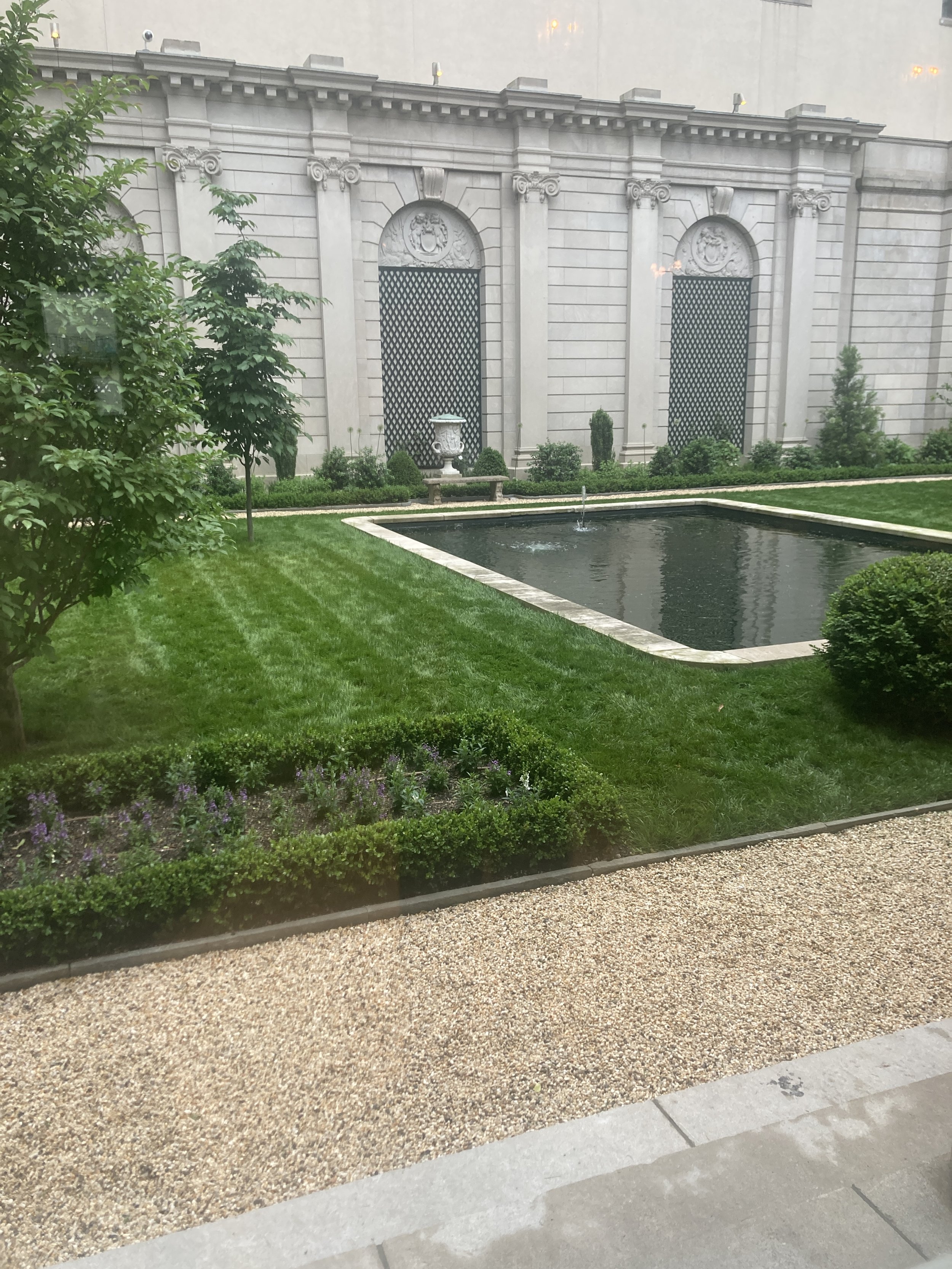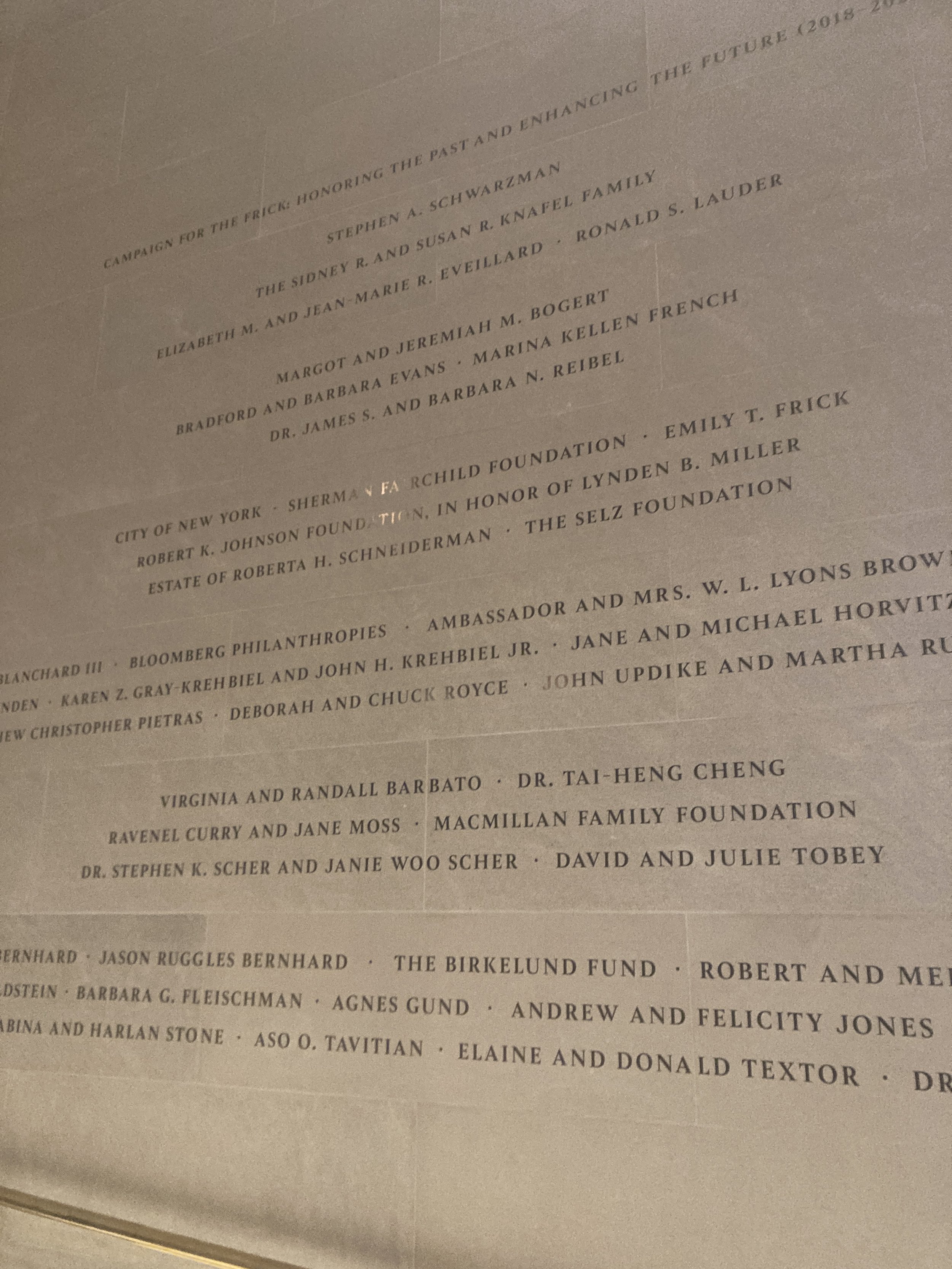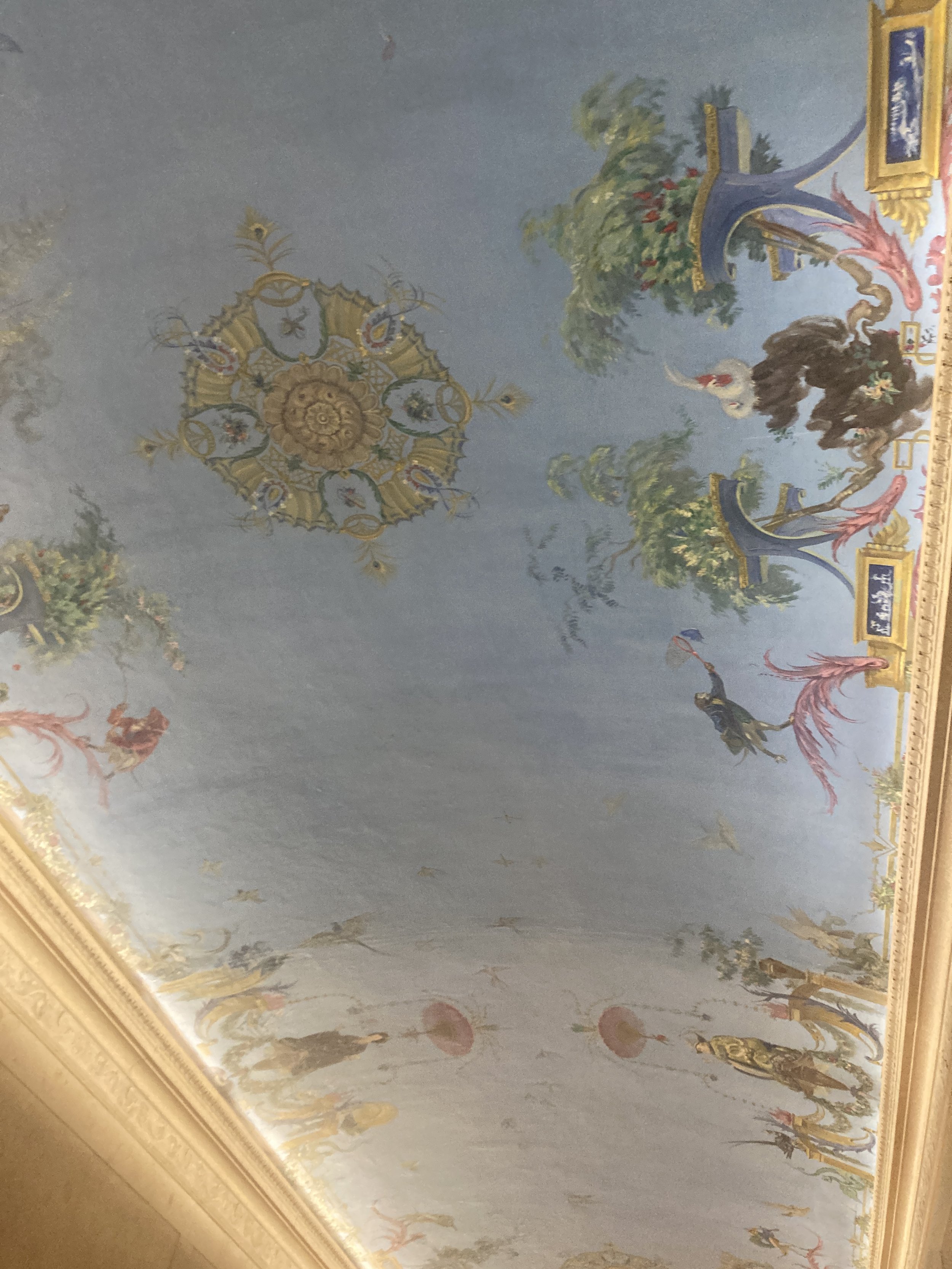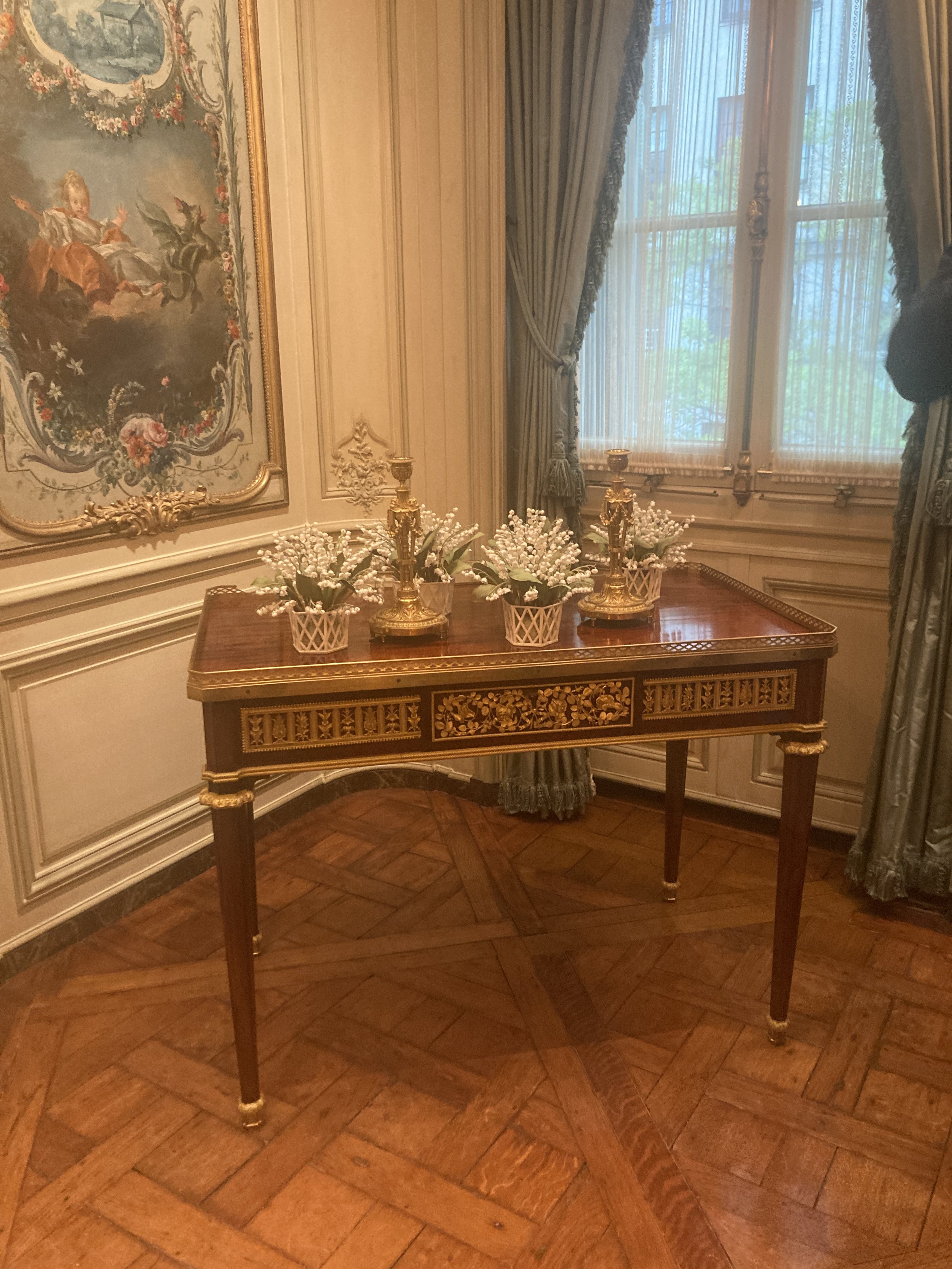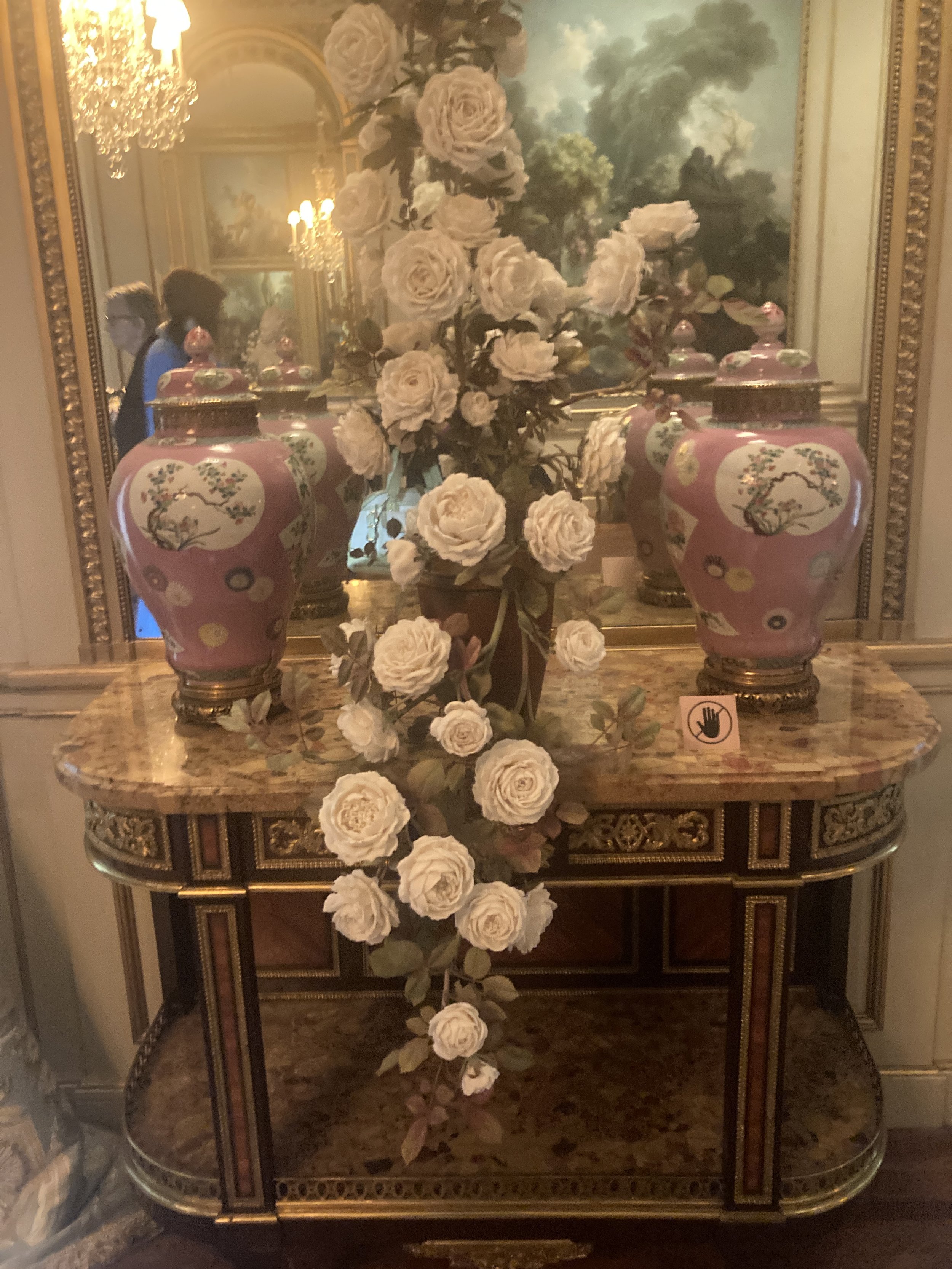The Frick Museum’s New Westmoreland Café Amplifies Stunning Renovation
I’ve always had a crush on The Frick Museum. It’s one of Gotham’s jewels of cultural inspirations. Small enough to pocket a dream and still grand enough to swoon over. After all, unlike big public museums, the Frick is akin to what us garden historians refer to as “pleasure gardens” meaning it was designed for a family’s pursuit of beauty vs a public space.
Ahh, that other Gilded Age. The Frick , however, is not frozen in amber. It’s recent renovation both preserves and opens up new vistas and art. I visited the renovated Frick and was enchanted…
The Frick Collection opened Westmoreland, the first café at its Fifth Avenue home. The newly built addition is a highlight of the museum’s revitalized visitor experience, following its recently completed renovation and enhancement.
Located on the second floor of the expansion designed by Selldorf Architects, the intimate café takes its name from the private Pullman train car the Frick family used, beginning in 1911, to travel between their homes in New York, Pennsylvania, and Massachusetts, and farther afield, and Westmoreland being the name Pennsyvania county in which Frick was born.
Frick family posing with Westmoreland, the family railcar.
Featuring interior design by Bryan O’Sullivan Studio (BOSS) and a bespoke mural by artist Darren Waterston, Westmoreland offers an all-day, table-service menu conceived by Union Square Events (USE).
The café—a gift of the Margot and Jerry Bogert Family—has about fifty seats and is offered as an amenity for museum ticket holders and members. Same-day reservations can be made onsite at the museum.
The view from the renovated museum and the new Westmoreland Cafè is serene and sublime.
One of my favorite garden design “sheroes,” Lynden B. Miller honored the historic and revered John Russel Pope garden, who was “responsible for the conversion of the Frick mansion into a museum.” With this historic renovation, there was a lot of justified pushback to eliminating the iconic garden. Cooler heads prevailed, Lynden was brought in and, just like that, magic was restored and amplified… Whew.
Lynden B. Miller recognition, Frick Museum
One can now enjoy and meditate on the gorgeous garden from the street level and inside the museum, and especially from the Westmoreland.
Westmoreland overlooks the Museum’s 70th Street garden. Along with its interiors by BOSS which drew inspiration from all three of the museum’s green spaces ~ Central Park is just across the street from their Fifth Avenue address, as well as the mansion’s 1914 historic finishes.
The café’s floral references and bar surrounds embrace a palette of soft pastels and deep greens complimenting the dreamlike mural of the family’s foyer and dining area.
Westmoreland is open during regular museum hours. For further information, visit frick.org/cafe.
“As we continue to celebrate the Frick’s grand reopening, we are thrilled to debut the museum’s first-ever café,” said Axel Rüger, Anna-Maria and Stephen Kellen Director. “The new amenity helps bring our institution into the twenty-first century, and it will provide our visitors and members with a respite to enjoy conversation about the collection over refined food and beverages. Westmoreland’s interior by Bryan O’Sullivan Studio resonates with the elegance of Selldorf Architects’ expansion, amplifying the museum’s atmosphere of timeless beauty and extending the Frick experience beyond our galleries.”
DINING CONCEPTS EMBRACING THE PRESENT WITH A NOD TO THE PAST
At Westmoreland, Union Square Events (USE) brings its signature market-driven approach to the table, with an all-day menu built around peak-season produce and hand-selected ingredients from regional farms and purveyors. The café’s elevated American fare includes salads, pastas, savory soups, delectable entrées, and a pastry program.
The culinary approach—led by Executive Chef Skyllar Hughes under the direction of USE’s Vice President of Culinary Operations, Nickolas Martinez—draws from both local seasonality and the Frick family’s historic menus, resulting in refined dishes such as a berry tart, echoing ingredients favored by Adelaide Frick, wife of the museum’s founder. In addition to local coffee and teas, the beverage program features European and American wines as well as spirit-forward and spirit-free cocktails. Selections are inspired by the Frick’s Webby-nominated video series and subsequent book Cocktails with a Curator, reinterpreted by USE’s beverage team to create elegant, narrative-rich drinks such as the “Widow’s Kiss” and “The Saint.”
The café features custom furnishings, including bespoke walnut tables with brass detailing and upholstered wooden dining chairs, as well as a polished walnut bar with cast-glass finishes. Wall banquettes and tables of four at the center of the room balance intimacy and conviviality. The host station and bar cabinet lend an additional tailored touch shared by Westmoreland’s namesake. In the foyer, a central settee clad in green mohair serves as a sculptural focal point at the entrance.
Artist Darren Waterston was commissioned to create a decorative scheme for the new café, nominated by Xavier F. Salomon, the Frick’s Deputy Director and Peter Jay Sharp Chief Curator. Elements include a foyer mural (Fugue), a panoramic frieze (Arcadia), and three bas relief ceiling medallions. These interior features make art historical references ranging from Japanese screens to Renaissance landscape painting, including the Frick’s famed St. Francis in the Desert by Giovanni Bellini.
Henry Clay Frick’s wife, Adelaide, and daughter, Helen, continued to use the car until the early 1930s—shortly before the founding of The Frick Collection as a museum, where works by Rembrandt, Vermeer, Velázquez, and other artists have found their permanent home that visitors enjoy today. The car was ultimately dismantled in the 1960s.
Westmoreland is the name of the county outside of Pittsburgh, Pennsylvania, where museum founder Henry Clay Frick was born. Some private railway cars of the era bore grand mythological names, such as Olympia or Atalanta, while others were named for places of significance to their owners. Frick purchased his car five years after moving to New York City, yet he chose a name that honored his family’s rural origins.
The renovated Frick opens up spaces that heretofore were closed to visitors because…
Well, the newly opened spaces give us visitors a view into the family’s intimate living spaces, upstairs. Adelaide and Helen’s dressing rooms and sitting areas ~ all filled with stunning art.
It’s more than a challenge to share the art with you because photography isn’t allowed… hmmm And yet…
I couldn’t help but be transfixed by two other artful elements.
One I came to appreciate as I walked through the museum is a burgeoning olfactory sense that the air was filled with a lovely scent. I am very sensitive to smell (and sound) and my hunch was confirmed by other visitors.
The other modern-day artful addition to the Frick is that of the floral artist, Vladimir Kanevsky, who has long been revered for his life-like porcelain flower sculptures.
The many compositions now on view at the Frick will take your breath away.
Please enjoy this overview of a beloved, treasured museum. This quick video will intrigue you. It does it for me every single time I vist. And I hope it will inspire you to visit and or explore the Frick’s glorious art.
So glamorous…




